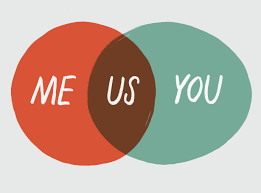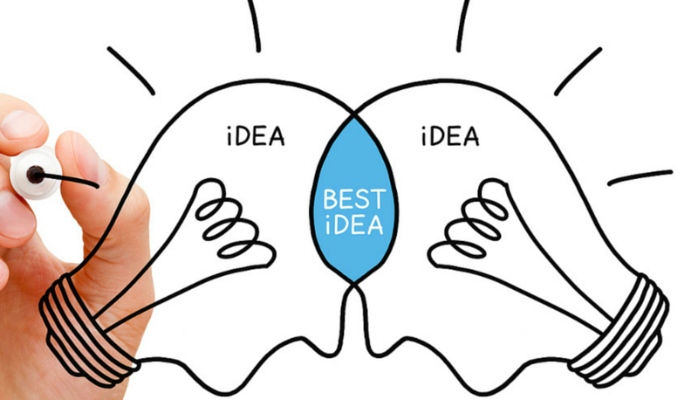e-Learning Ecologies MOOC’s Updates
Essential Update #5: Collaborative Intelligence | Peer to Peer Learning
Collaborative Intelligence | Peer to Peer Learning
blog.ericschwartzman.com
Peer to peer learning at the root is “where the knowledge of a working group is greater than the sum of its individual members” (Cope & Kalantzis 383). In my experience as a high school teacher I can define it by working in collaborative groups to solve a common goal where learning is taking place between the students through interactions, discussions, and teaching each other. I believe collaborative intelligence is the key to success. Whether that is in the classroom, community, or workplace. Each person has their own set of ideas and when banded together, there is a greater instance of success.
Peer to peer learning can be as basic as working collaboratively to create an art piece, solve a problem, or giving feedback throughout a project where technology doesn’t really play a role in the interaction between peers. But now, here are the days where groups do not need to meet face-to-face in order to work together. They can collaborate and learn from each other or be the individual pieces of a whole working together through such forms as Google Docs, OneNote, or Padlet. Whereas, in these forms of peer to peer learning there is “analysable records of social knowledge work, recognizing and crediting for instance the peer feedback that made a knowledge construct so much stronger, or tracking the differential contributions of participants in a jointly created work (Cope & Kalantzis 383).
The Mechatronics class that I teach is entirely centered on collaborative design thinking. Each project is designed to be performed in groups where the students work together to solve a common goal. These goals can range from solving a murder mystery puzzle to building and operating a robot to complete a task. I structure the student groups for each activity to help bridge the gap between skills and knowledge. Whereas, each student is learning from each other and each students’ abilities and strengths can be highlighted. I started the groups with a murder mystery activity to help the students learn how to collaborate and learn from each other. It helped to demonstrate to the students the need for considering the information every group member can contribute and gives them practice in organizing to accomplish a task. Each group was given the same murder mystery and each member of the group was given one essential piece of information – a clue in the murder mystery. Therefore, no student can excuse themselves because they didn’t know anything about the topic. They were not allowed to pass each other their clues to a leader and no one else could read or see their clue. All sharing of clues and ideas must be done verbally. This promoted discussion and the students needed to work together to put the facts and timeline in order to solve the mystery and find the murderer, the weapon, the time of the murder, the place of the murder, and the motive. Not all groups were able to put the facts together, but that was not the point. The point was for discussion, sharing of ideas, and learning to work together.
The concept of peer to peer learning for collaborative intelligence can be further illustrated though what I call “Ask three, then me” This on a very basic level helps me as a teacher because it is difficult to circulate the room every time a student has one question. In turn, this enables the students to teach each other and when students teach someone else they are ultimately gaining a better understanding of the concept. Students often learn better from their peers because they are so to speak “on the same level” and are not just hearing it from the teacher. With this concept, when the student has a question or is stuck on a concept or activity they should first ask three students around them and if those are students are not able to answer their question, they should then ask me. This simple tool also helps me become reflective on my teaching. If three students in the class aren’t able to help answer their question, then maybe I did not teach it thoroughly or give enough explanation.
With emerging technologies, I wouldn’t say there are more opportunities to learn from peers, but it makes learning and collaboration easier from a distance that can take place at any time or place.
Some other examples of peer learning are Gallery Walks where there is discussion that allows students to be actively engaged as they walk throughout the classroom. They work together in small groups to share ideas and respond to meaningful questions, documents, images, problem-solving situations or texts. Breakout Boxes that bring the 4 C’s alive; critical thinking, collaboration, creativity, and communication, and design thinking that leads you through the Engineering Design Process to help come up with a solution to a problem.
Sources:
ABOUT. (n.d.). Retrieved May 19, 2018, from https://www.breakoutedu.com/about/
Duncan, B. (2017, January 11). My 2017 Resolution: More Collaboration in Food Tech. Retrieved May 19, 2018, from https://www.chowlyinc.com/2017-resolution-collaboration-food-tech/ Photo Credit
Gallery Walk. (n.d.). Retrieved May 19, 2018, from http://www.theteachertoolkit.com/index.php/tool/gallery-walk
Schwartzman, E. (2018, February 01). 6 Reasons to Use Slack Digital Collaboration Platform. Retrieved from http://blog.ericschwartzman.com/6-reasons-slack-conquering-collaboration-work/ Photo Credit
The Engineering Design Process. (n.d.). Retrieved May 19, 2018, from https://www.sciencebuddies.org/science-fair-projects/engineering-design-process/engineering-design-process-steps




Well explained Bernice! Collaborative intelligence brings a shift in a classroom environment from top-down authority to shared power. It also build bridges of cooperation and collaboration where ideas can be exchanged and best output can be generated. It helps to develops problem solving skills and decision making skills of the learners.